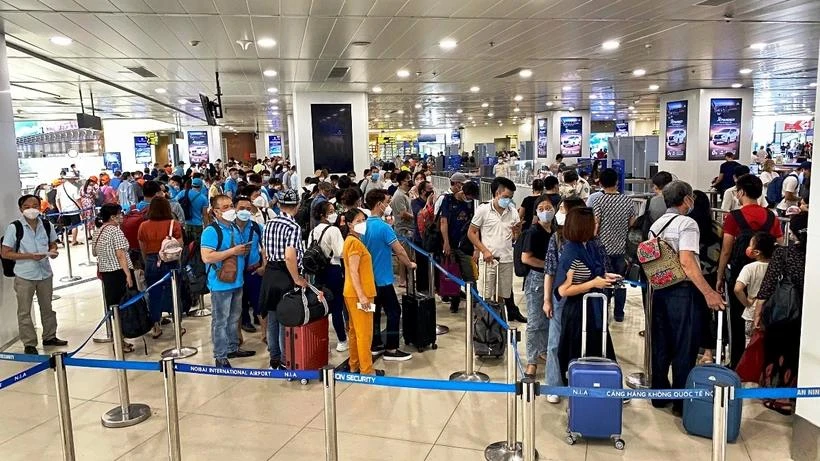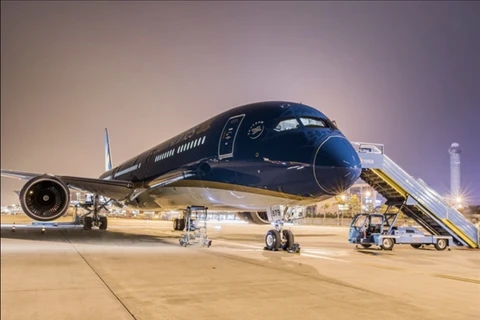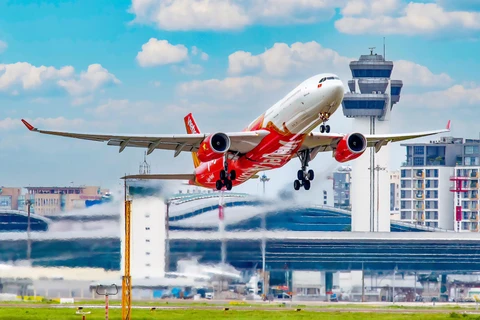
Hanoi (VNA) – International flights on Vietnamese airlines have fully recovered and been expanded to new markets while the domestic market has contracted due to a shortage of aircraft.
International flights increase, the domestic market shrinks
During the first half of 2024, Vietnamese carriers operated nearly 160 international air routes connecting Vietnam with destinations around the world. International flights have returned to pre-COVID-19 levels and have been expanded to new markets in Central Asia, India, and Australia, according to the Civil Aviation Authority of Vietnam (CAAV).
The 10 foreign markets with the largest numbers of passengers coming to Vietnam were the Republic of Korea, China, Taiwan (China), Thailand, Japan, Singapore, Malaysia, Australia, Hong Kong (China), and India.
Though passengers from China have yet to reach pre-COVID levels, there are still signs of recovery. Meanwhile, the numbers of passengers from other markets have neared the 2019 level or grown slightly. Particularly, those from Australia and India have risen sharply.
During major festivals or holidays and at the start of summer, international flights to tourist magnets like Da Nang, Cam Ranh, Phu Quoc, and Da Lat recorded increases in both passengers and flight frequency.
The passenger throughput of airports nationwide exceeded 54 million in the first six months, equivalent to 97% of that in the same period of 2023. That consists of more than 34 million domestic passengers and over 20 million international ones, up 38% year on year. The seat occupancy rate was kept at over 80% on domestic routes and over 70% on international routes.
In the domestic market, Vietnamese airlines served over 17 million domestic passengers, equivalent to 82% of that in the same period last year.

The CAAV blamed the domestic market contraction compared to 2023 and 2019 on fleet-related difficulties because of the worldwide aircraft engine recall, which forced carriers to reduce flights on domestic routes. Vietnam Airlines has maintained the domestic flight network with 50 routes linking Hanoi, HCM City, and 20 airports nationwide.
The CAAV forecasts the number of international flights will evolve in 2024, serving as the main driver for overall aviation growth. In contrast, the domestic market will continue to be affected by aircraft shortages, exchange rates, and fuel prices.
State support for airlines
CAAV Deputy Director Do Hong Cam said the aviation market has encountered many difficulties in the recent past. Aside from coping with the negative impacts of the COVID-19 pandemic, it has also faced such challenges as fleet contraction. The fleet of Vietnamese carriers decreased by about 40 - 45 aircraft compared to 2023 due to the engine recall and the restructuring of Bamboo Airways and Pacific Airlines.
They have also struggled with finding planes to lease because of rising lease rates, higher fuel prices, and exchange rates. These factors have affected supply and airfares for domestic routes in peak periods like festivals and holidays, he pointed out.
In that context, the CAAV has actively coordinated with enterprises in the sector to devise measures to optimise operational capacity.

Regarding the aircraft shortage due to the manufacturer engine recall, the Ministry of Transport asked airlines to detail plans to seek State support. It also ordered relevant agencies to work out solutions to report to the Prime Minister./.






















